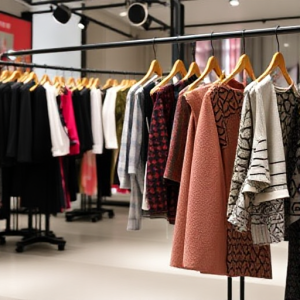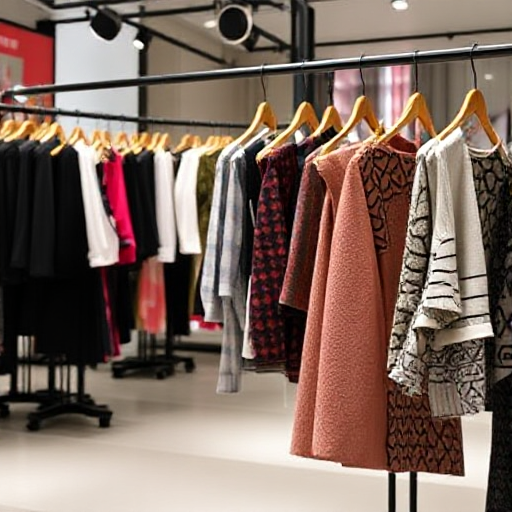
Establishing a well-thought-out marketing plan is crucial for businesses looking to grow their brand, attract customers, and stay competitive. Fashion marketing involves a mix of creativity, strategy, and consumer understanding, where trends shift rapidly, and staying relevant is key. Whether you’re launching a new fashion brand, revamping an existing one, or simply enhancing your current marketing efforts, a solid fashion marketing plan can significantly impact your success.
This guide will walk you through the process of creating a fashion marketing plan, step by step.
1. Understand Your Brand and Target Market
The first step in any marketing plan is to define your brand and understand the audience you’re targeting. Fashion marketing is personal and aspirational, and your brand needs to speak to a specific consumer group. Ask yourself the following questions:
- What is your brand identity? What sets your fashion brand apart from others in the market? Consider your brand’s mission, values, aesthetics, and story.
- Who is your target market? Identify the demographics, psychographics, and behaviors of your ideal customers. Are you targeting high-end fashion enthusiasts, eco-conscious consumers, or streetwear aficionados?
- What problem does your brand solve? Understand the needs or desires your fashion products address for your customers—whether it’s about comfort, sustainability, style, or innovation.
Understanding your brand and target audience will shape all other elements of your marketing strategy.
2. Conduct Market Research
Before diving into marketing activities, it’s vital to understand the fashion market landscape. Conducting thorough research allows you to identify current trends, competitor strategies, consumer needs, and potential gaps in the market.
- Trend Analysis: Stay up to date with fashion trends to ensure your marketing campaigns are relevant. Follow fashion shows, influencers, and popular fashion publications to see what’s trending.
- Competitor Analysis: Research your competitors’ marketing strategies to understand what works in your niche. Look at their digital presence, advertising tactics, collaborations, and product offerings.
- Consumer Insights: Gather data on consumer preferences and behavior, especially regarding how they shop, engage with brands, and make purchasing decisions. Tools like surveys, focus groups, and social media listening can help.
This information will provide insights into how to position your brand, craft messages that resonate with your audience, and discover opportunities for differentiation.
3. Set Clear Goals and Objectives
Setting specific, measurable, achievable, relevant, and time-bound (SMART) goals is essential for any marketing plan. Your goals will guide your strategies, tactics, and budget allocation. Common objectives for a fashion marketing plan include:
- Brand Awareness: Increase recognition of your brand in your target market.
- Sales Growth: Boost online and offline sales by attracting new customers or encouraging repeat purchases.
- Engagement: Enhance engagement on social media platforms or through email marketing.
- Customer Retention: Build loyalty by fostering deeper connections with your existing customers.
Defining clear goals ensures your marketing efforts are focused and aligned with your business’s overall objectives.
4. Develop Your Unique Value Proposition (UVP)
In the competitive fashion industry, a strong Unique Value Proposition (UVP) helps your brand stand out. Your UVP should clearly communicate what makes your fashion brand unique and why customers should choose you over the competition.
Ask yourself:
- What are the unique features of your fashion products (e.g., exclusive designs, premium quality, sustainable practices)?
- How do you deliver value to your customers beyond the product itself (e.g., exceptional customer service, an inclusive brand ethos)?
- What emotional connection does your brand foster with customers (e.g., confidence, empowerment, self-expression)?
Crafting a compelling UVP will allow you to create more persuasive messaging and attract the right kind of customers.
5. Choose the Right Marketing Channels
Fashion marketing relies heavily on visual appeal, and the right marketing channels will help you showcase your brand’s aesthetic and attract your audience. Depending on your target market, your marketing channels could include:
- Social Media Platforms: Instagram, TikTok, Pinterest, and Facebook are popular platforms for fashion brands to engage with their audience through visually striking posts, stories, reels, and influencer collaborations.
- E-Commerce and Website: Your website and e-commerce platforms should offer a seamless shopping experience and reflect your brand’s personality. Utilize SEO, content marketing, and paid ads to drive traffic.
- Influencer Marketing: Partnering with influencers and fashion bloggers can help amplify your brand message and reach new customers. Be sure to choose influencers whose followers align with your target audience.
- Email Marketing: Build a loyal customer base with personalized email campaigns offering promotions, product launches, and fashion tips.
- Events and Fashion Shows: Hosting or participating in fashion shows, pop-up shops, or collaborative events can help generate buzz and foster a strong brand presence.
Selecting the right mix of marketing channels ensures that you reach your audience where they are most active and engaged.
6. Create a Content Strategy
Content is the heartbeat of fashion marketing, especially when it comes to visual storytelling. A well-planned content strategy helps you convey your brand message, showcase your products, and connect with your target market on an emotional level. Key content elements to focus on:
- Visual Content: Invest in high-quality images, videos, and lookbooks that showcase your fashion products in real-life scenarios. Use professional photography to highlight your designs and help customers visualize how they would wear your products.
- User-Generated Content: Encourage customers to share photos of themselves wearing your brand, creating authentic, relatable content that resonates with other consumers.
- Blog Posts and Articles: Share fashion tips, trends, and behind-the-scenes content on your website to engage with your audience and improve SEO.
- Interactive Content: Host polls, quizzes, and live streams to engage your audience in real-time.
A content calendar will help you stay consistent and align your content with key marketing initiatives and product launches.
7. Allocate Your Budget and Resources
A crucial aspect of any fashion marketing plan is determining how much money you will invest in various activities. Fashion marketing often requires a significant budget, especially for paid campaigns, influencer partnerships, and high-quality content production.
Break down your budget into specific categories:
- Advertising: Allocate funds for digital ads (Google, Instagram, Facebook), print ads, and sponsored content.
- Content Production: Set aside money for photography, video production, graphic design, and copywriting.
- Influencer Partnerships: Budget for influencer collaborations and sponsorships.
- Events: Plan for the cost of hosting or participating in fashion events, pop-up shops, or exhibitions.
Ensure your marketing budget aligns with your goals and expected return on investment (ROI).
8. Measure and Analyze Performance
To know if your fashion marketing plan is working, you need to track and analyze your results. Use tools like Google Analytics, social media insights, and email marketing analytics to measure:
- Website Traffic: Monitor visits, page views, and conversions to assess how well your website is driving sales.
- Engagement Metrics: Track likes, shares, comments, and follower growth on social media.
- Sales Metrics: Analyze sales data to understand which products are performing well and which marketing efforts are generating the most revenue.
- Customer Feedback: Gather customer reviews and feedback to gauge satisfaction and loyalty.
Regularly assess your performance and adjust your strategy as needed to optimize results.
9. Iterate and Improve
Fashion marketing is dynamic, so it’s important to continuously refine your plan. Be prepared to tweak your approach based on customer feedback, market shifts, and new trends. Regularly update your content, try new marketing tactics, and innovate to keep your brand fresh and relevant.
Creating a fashion marketing plan requires a deep understanding of your brand, market, and customers. By following these steps—defining your brand, setting clear goals, selecting the right channels, creating engaging content, and constantly measuring your success—you can craft a strategy that not only attracts attention but builds lasting customer relationships. The key is to stay adaptable, creative, and responsive to the ever-changing world of fashion.
With the right planning and execution, your fashion marketing efforts will help elevate your brand, drive sales, and create a loyal following.
